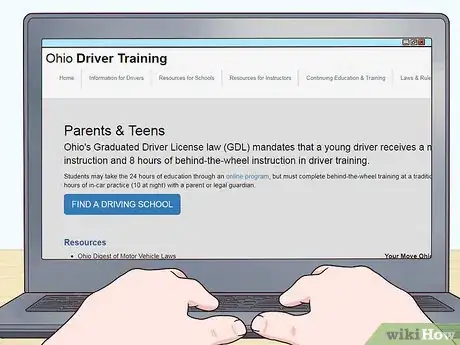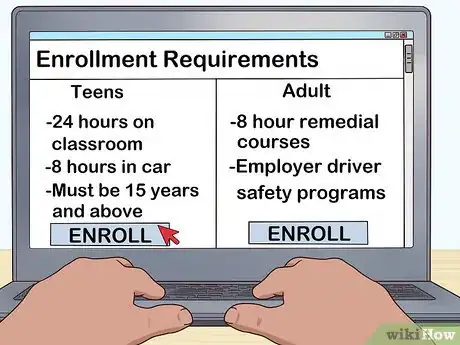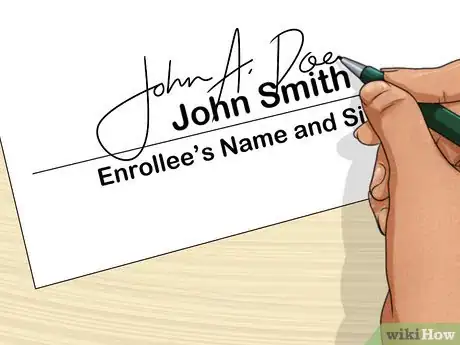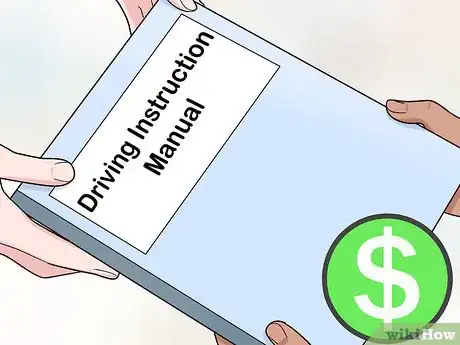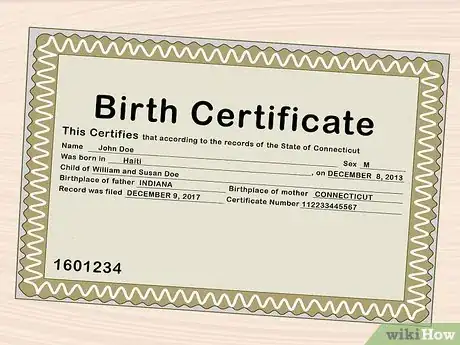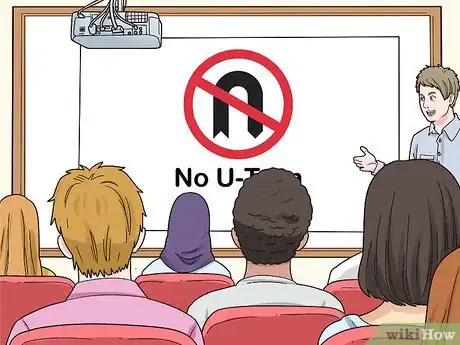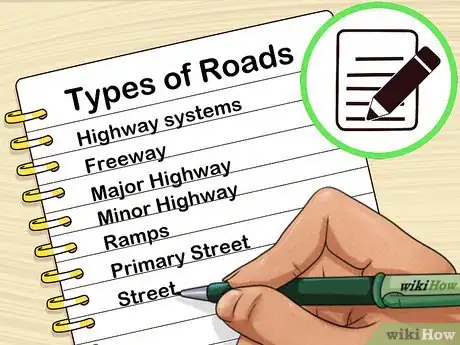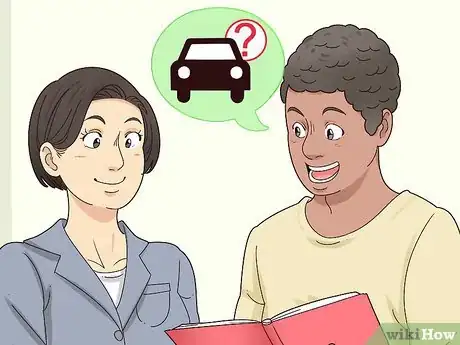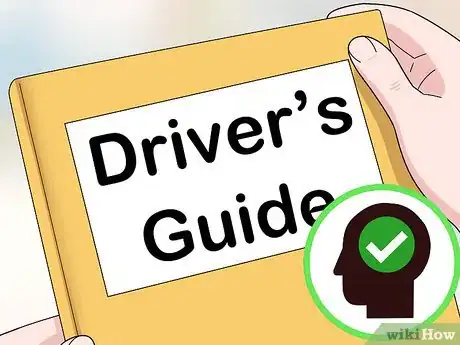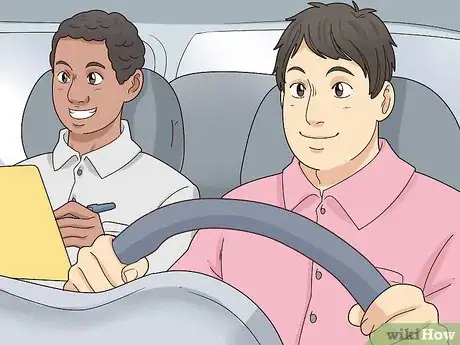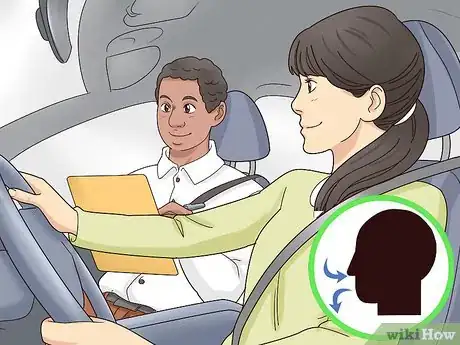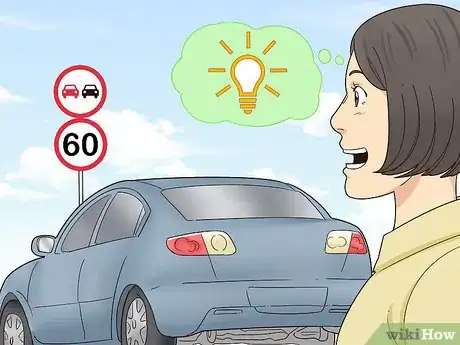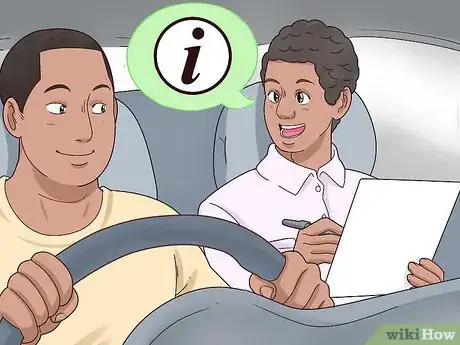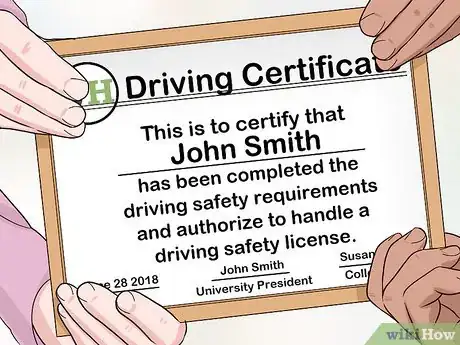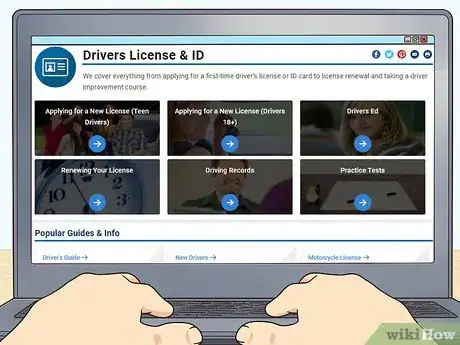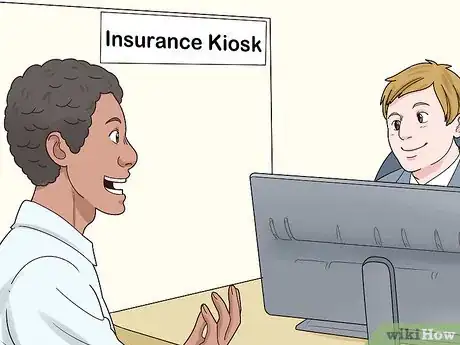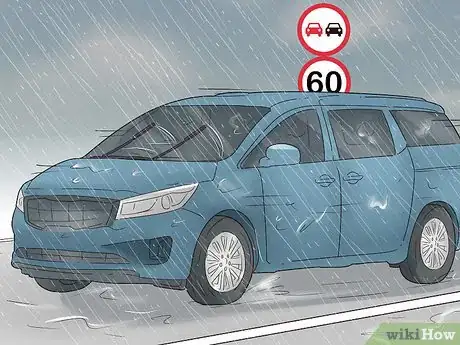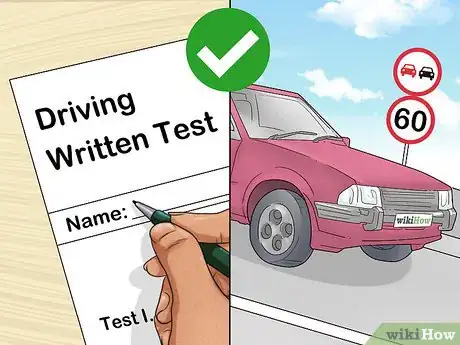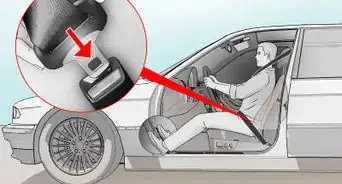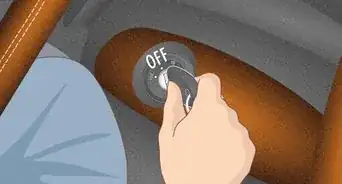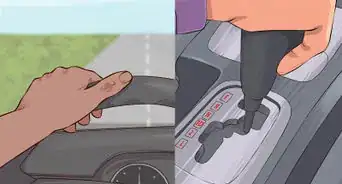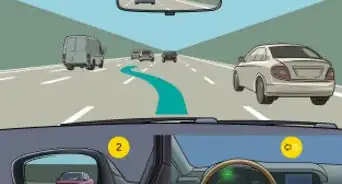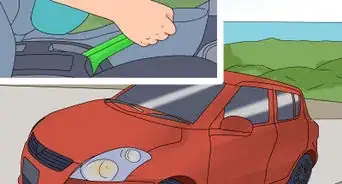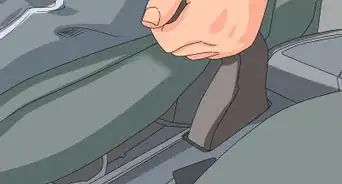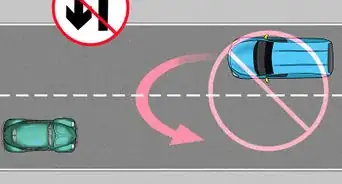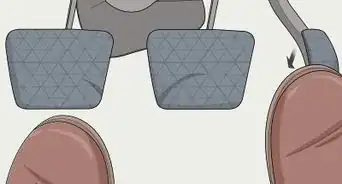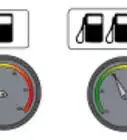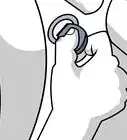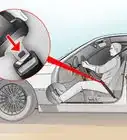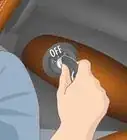This article was co-authored by Simon Miyerov. Simon Miyerov is the President and Driving Instructor for Drive Rite Academy, a driving academy based out of New York City. Simon has over 8 years of driving instruction experience. His mission is to ensure the safety of everyday drivers and continue to make New York a safer and efficient driving environment.
There are 8 references cited in this article, which can be found at the bottom of the page.
This article has been viewed 22,052 times.
Driver’s education classes, or driver’s ed, is a requirement for getting your driver’s license. Sign up with an accredited course in your area to begin the process. Classes generally involve 2 parts, classroom instruction and behind-the-wheel training. Finish the class to get your certificate of completion, which you can use to save money on insurance and apply for a driving permit.
Steps
Signing up as a Teen or Licensed Driver
-
1Find a driver’s ed course in your area. Your government's website may have a convenient list of schools that offer driver’s ed. Otherwise, you can search online or in a phone book for driving schools in your area. Look for a class that suits your needs.[1]
- For instance, if you are an adult, make sure you find a school that offers courses for adults, not just teens.
- For example, if you live in Ohio, visit http://www.drivertraining.ohio.gov/drivers.aspx.
-
2Look for teaching credentials at the school. Unless you are going to learn for your own sake, teaching credentials matter. You may not be able to apply for a driver’s license unless you attend an accredited class. These credentials should be on display in the school and shown to you if you ask to see them.[2]
- In the U.S., class certificates are only valid for licenses if they are from schools accredited by the state.
- If the school is listed on your government’s website, chances are it is trustworthy. However, you should still ask to see the teaching credentials.
- If you are going to reduce your insurance rates, talk to your insurance company to ensure they will honor a certificate from the school.
Advertisement -
3Sign up for a driving course with the school. After choosing a school, get in touch with them to find out more details about the class. Some topics to ask about are the cost, the schedule, and if you need to purchase any reading material.
- Some high schools and universities offer driver’s ed courses to the community.
- Online courses are available. They are the same as in-person driving schools, except you will still need to visit an in-person school for behind-the-wheel training.
-
4Sign the school’s contract to register for the class. The school will give you instructions on how to proceed once you contact them. A school official may ask you to stop by their office to sign the contract before the class begin. Signing it means you understand the course requirements and agree to pay for them.
- Some schools allow you to download the contract online and fax or mail it back to them when completed.
- Every class operates differently, so make sure you understand the registration rules before choosing to attend.
-
5Pay the class fee to the school. Many schools will have you pay the course fee when you register and sign the contract. Others will have you bring it to your first day of class. The fee is always due before the first class begins, but ask school officials if you’re unsure what to do.
- Depending on the school, the fee can be anywhere from $45 to $500 USD.[3]
- Most schools accept cash, checks, and money orders.
- Some schools also offer payment plans. Ask about it when you register for the class.
-
6Purchase any instructional material required in the class. You may need to purchase a driving instruction manual for the class. If the school tells you you need to do this, make sure you get a manual before the first class.
- Many schools supply the manual themselves or use a free manual from the government.
-
7Bring any proof of identification required to the first class. Check with your school to find out which documents you need to bring with you. If the school didn’t ask for these documents during registration, they will want them when you arrive for class.
- In the U.S., for example, you may need to bring a learner’s permit along with proof of age.
- For proof of age, bring a document such as a birth certificate, passport, or baptismal record.
Managing Coursework and Classroom Instruction
-
1Attend classroom dates for instructional lectures. Driver’s ed is like a regular school class. The bulk of the class is lectures about traffic rules, safe driving, and handling emergencies. The schedule varies from class to class, but you will be expected to be present and attentive during each class.
- In the U.S., this part of the class is about 24 to 30 hours long, spread out over about 15 days.
-
2Listen to learn traffic laws and regulations. The class will start off with the basic rules of the road. The instructor explains these rules and how to follow them. Throughout the class, you may watch instructional videos or discuss driving etiquette in your country.[4]
- For example, the instructor may explain a law about slowing down in a construction area. You may then watch movies about the causes of accidents.
- Driving etiquette differs from place to place. It can be something like how to indicate a turn with a hand signal or who crosses an intersection first.
-
3Take notes in the classroom. Bring a piece of paper and write down what you learn. Jot down some quick notes you can use to study later. Driving can involve a lot of rules and regulations, especially if you travel, so there are a lot of important details to memorize.
- For example, you need to know the different types of roads, such as residential roads and highways. Each road has a different general speed limit.
-
4Ask the instructor any questions you have. The instructor is there to prepare you to drive safely on the road. If you need clarification or more information about a topic, ask. Keep your questions related to safe and responsible driving so every student has a chance to learn.[5]
- For instance, you may not know when you need to turn on your headlights.
-
5Use the class material to study. Many classes make use of an instructional booklet, which covers all of the information on the driving test.[6] You will also have any notes or handouts from class. Memorize it to prepare yourself for the test.[7]
- You do need to memorize the class material if you plan on taking a license test. A lot of it, including information on laws and safe driving, are necessary when you drive.
- Also study up on how to manage emergency situations. For example, you need to know how to keep warm in case your car stalls.
Succeeding in Behind-the-Wheel Training
-
1Schedule behind-the-wheel training with the school. After the instructional portion of the class, you get to go out on the road with an instructor. Coordinate with the school to set up times that work for you. These sessions may last about 1 hour each time and are meant to give you practical experience.
- In the U.S., you will need to set up about 6 to 8 sessions.
-
2Drive with the instructor in the car. A school instructor usually brings a car to you, then gives you feedback as you drive. These cars have a special brake the instructor can use to control the car. You will start off with simple tasks like acceleration and turning, then progress to driving longer distances.[8]
- At the end of the lesson, the instructor may ask you to drive to the next student’s home. That student then drives you home during their lesson.
-
3Stay calm as you drive. Learning to drive can be stressful, especially with another person in the car. Take a deep breath and remember everything you have learned. You are still learning, so don’t worry about your mistakes or what you don’t know. Your instructor is there to handle any problems that arise.[9]
- Accidents don’t happen often, but if something happens, the school will have an insurance policy.
-
4React to other drivers on the road. To drive successfully, keep your eyes on the road. This won’t be too difficult while an instructor is present. Watch how other people drive and learn from them. You will need to react to situations on the road in order to avoid accidents.[10]
- For example, a car may stop suddenly. The cars in front of you may swerve to the side, and you will have a couple of seconds to avoid the stopped car.
- Your car might hit a patch of ice. Pump the brakes to stabilize the car.
-
5Adjust your driving style according to the instructor’s suggestion. Listen to what your instructors say. They are experienced drivers there to make you into a better driver. Take their feedback into account so you can improve as a driver.
- For instance, they may tell you to slow down when turning and speed up when merging onto a highway.
Benefitting from Passing the Class
-
1Receive your completion certificate when you finish the requirements. Complete both the classroom instruction and behind-the-wheel training portions of the class. At the end, the school will have a completion certificate printed for you. They may give it to you right away or send it to you in the mail.
- You need the certificate to prove you completed the class, so make sure the school provides it for you.
- If you lose your certificate, contact the school for a replacement.
-
2Get a learner’s permit from your government. Visit the agency in charge of driving regulations in your country. Bring them the documents they require, such proof of age and residency. If you are under 18, you may need a parent present to sign a driving permission form.[11]
- In the U.S., the Department of Motor Vehicles (DMV) often handles both permits and licenses.
- You can find a list of agency branches by consulting your government’s website.
-
3Check with your insurance company for discounts. If you purchased a policy from an insurance company, contact them for potential discounts. They may refund you some of the class fee. For adults, completing a driver’s ed course can lower your rates.[12]
- You will need to send a copy of your driver’s ed certificate to the company.
- Drivers are expected to purchase insurance before driving, so you should already have a policy.
-
4Practice driving on your own time. Become a better driver by getting out on the road. Learn to drive on all sorts of roads in different weather and in traffic. You never know when these scenarios will happen, so it’s best to prepare yourself for them by using what you have learned.[13]
- Start in low-key areas such as a quiet street or empty parking lot, then work up to busier locations.
- If you don’t have a permanent license, you may be required by law to drive with an adult in the car.
-
5Complete the driving test to get your license.[14] The procedures for getting your license differ from place to place. You may need to do a written test and then a behind-the-wheel test. These tests cover the material you learn in class, so even if you feel nervous, remember that you’ve been through it before.[15]
- You will probably also have to take a quick vision test by reading from an eye chart. See an eye specialist first if you are experiencing any problems.
Expert Q&A
-
QuestionWhat can I do to prepare for my driver's ed test?
 Simon MiyerovSimon Miyerov is the President and Driving Instructor for Drive Rite Academy, a driving academy based out of New York City. Simon has over 8 years of driving instruction experience. His mission is to ensure the safety of everyday drivers and continue to make New York a safer and efficient driving environment.
Simon MiyerovSimon Miyerov is the President and Driving Instructor for Drive Rite Academy, a driving academy based out of New York City. Simon has over 8 years of driving instruction experience. His mission is to ensure the safety of everyday drivers and continue to make New York a safer and efficient driving environment.
Driving Instructor Take some time to read through the manual for the driver's ed course to help you study. You may be able to find sample tests online through your local DMV site as well.
Take some time to read through the manual for the driver's ed course to help you study. You may be able to find sample tests online through your local DMV site as well. -
QuestionHow do I make sure I pass my driving test?
 Simon MiyerovSimon Miyerov is the President and Driving Instructor for Drive Rite Academy, a driving academy based out of New York City. Simon has over 8 years of driving instruction experience. His mission is to ensure the safety of everyday drivers and continue to make New York a safer and efficient driving environment.
Simon MiyerovSimon Miyerov is the President and Driving Instructor for Drive Rite Academy, a driving academy based out of New York City. Simon has over 8 years of driving instruction experience. His mission is to ensure the safety of everyday drivers and continue to make New York a safer and efficient driving environment.
Driving Instructor Closely study the instructional booklet used to teach driver's ed. It contains all of the info on the driver's test, so if you study it well, you'll know everything you need to know.
Closely study the instructional booklet used to teach driver's ed. It contains all of the info on the driver's test, so if you study it well, you'll know everything you need to know.
Warnings
- Drive safely and wear a seat belt!⧼thumbs_response⧽
- Obey the rules of the road, or else your learner’s permit or license may be taken away.⧼thumbs_response⧽
References
- ↑ http://www.drivertraining.ohio.gov/drivers.aspx
- ↑ http://www.drivertraining.ohio.gov/drivers.aspx
- ↑ https://www.dpsnc.net/domain/98
- ↑ https://www.sweetyhigh.com/read/drivers-education-tips-120416
- ↑ https://www.popularmechanics.com/cars/a7790/4-things-you-didnt-learn-in-drivers-ed-10526546/
- ↑ Simon Miyerov. Driving Instructor. Expert Interview. 4 December 2019.
- ↑ https://www.sweetyhigh.com/read/drivers-education-tips-120416
- ↑ https://www.dpsnc.net/domain/98
- ↑ https://www.popularmechanics.com/cars/a7790/4-things-you-didnt-learn-in-drivers-ed-10526546/
- ↑ https://www.popularmechanics.com/cars/a7790/4-things-you-didnt-learn-in-drivers-ed-10526546/
- ↑ http://www.dol.wa.gov/driverslicense/getpermit.html
- ↑ https://thelawdictionary.org/article/how-much-does-drivers-ed-lower-insurance/
- ↑ https://kidshealth.org/en/parents/driving-lessons.html
- ↑ Simon Miyerov. Driving Instructor. Expert Interview. 4 December 2019.
- ↑ http://www.dol.wa.gov/driverslicense/getpermit.html
